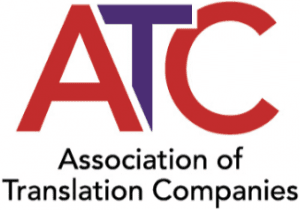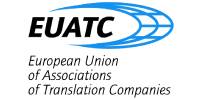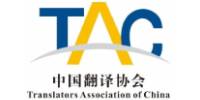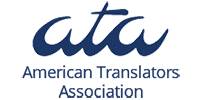We work hard at CTS to ensure our Chinese translation services exceed your expectations.
OUR RANGE OF SERVICES
We offer a wide range of professional Chinese translations to support your business. We aim to exceed your expectations on all of our services, on every occasion.
Interpretation
Mandarin & Cantonese interpreters for your meetings, appointments, and conferences.
Translation
Professional Chinese translations for websites, documents, software, apps, and videos.
Subtitle
Chinese subtitles for TV & movies, e-learning courses, and corporate videos.
CTS IN NUMBERS
We completed our first translation project in 1998. Since then, we have provided Chinese translation services to over 18,000 companies and private individuals worldwide.
337M
Words translated since 1998
2.3M
Minutes transcribed since 2011
1.1M
Minutes subtitled since 2014
98.7K
Projects completed since 1998
CHINESE TRANSLATION COMPANY
As a leading Chinese translation company, we are perfectly positioned to support your business communications in Mandarin and Cantonese. Our mission is to help Western and Chinese companies succeed in each other’s markets.
LOCALIZATION & BRANDING
We’ll help you engage with Chinese-speaking customers in their own language and culture.
GLOBAL OFFICES
Our office in New York is supported by our teams in Shanghai, Hong Kong, London, and Sydney.
OUR CSR PROGRAM
We donate to panda conservation projects in China, supporting a wide variety of initiatives.
QUALITY ASSURANCE
We use industry-leading software to boost the quality of our Chinese translation services.
TWO DECADES OF EXPERIENCE
We have two decades of experience providing clients with professional Chinese translations.
USCIS CERTIFIED
Our certified Chinese translations meet the requirements and specifications set by USCIS.
MANDARIN TRANSLATION SERVICES
CTS provides Mandarin translation services to multinational corporations and global brands. We deliver linguistically-accurate and culturally-authentic translations for a wide range of documents.
CHINESE LANGUAGE AND CULTURE
Here, we share our knowledge and insights on the Chinese language and culture and a few translation tips to ensure your project is successful.
Proofread Documents for Typos
The spell-check function in Microsoft Word is one of its most widely used features. However, it is not available in the Chinese language. In fact, out of the 93 languages that Microsoft currently supports, only Chinese and Japanese do not have spell-check functionality. If you are interested in understanding why spell checkers do not work for these two languages, including the steps we take to eliminate typos in our Chinese translation services, reach out to us, and we’ll explain everything to you in detail.
Text Expansion and Contraction
When an English document is translated into Chinese, it contracts by 33% in volume. This is something to keep in mind if the translated material is a website, book, or magazine. It is helpful to work with a Chinese translation company that offers desktop publishing services, as they can assist with the layout and presentation of your documents post-translation.
Avoid Machine Translation
Machine translations should only be used when a rough understanding of the material is sufficient or for entertainment purposes. We do not recommend using it on work-related documents due to the high risk of mistranslation. Trusting your important documents to a professional Chinese translation agency ensures accurate and reliable results every time.
Localization is the process of adapting translated text so that it is linguistically and culturally appropriate for its target market.
Localizing Culture
Localization takes into account cultural preferences in colors, symbols, numbers, and societal norms and beliefs. For example, while red represents danger in Western societies, it represents luck in Chinese culture. An excellent example is the stock symbol (ticker) often used by stock traders, where red represents falling stock prices in the USA but indicates increasing stock prices in China. At CTS, we ensure that our Mandarin translation services include cultural adaptation to resonate effectively with the target audience.
Localizing Numbers
Large numbers in Chinese are counted in units of ten thousand called Wàn. For example, one hundred thousand is localized as ten Wàn (ten sets of ten thousand). From our experience, incorrect localization of numbers is one of the most common Chinese translation errors.
Localizing Dates and Currency
The official formatting of dates in Mainland China is YYYY/MM/DD, and the official currency is the Renminbi (RMB) or Chinese Yuan (CNY). In Hong Kong, the official formatting of dates is DD/MM/YYYY or MM/DD/YYYY, and the official currency is the Hong Kong Dollar (HKD). Working with a Chinese translation agency will ensure accurate localization of dates and currency formats to meet the specific requirements of each region.
When clients reach out to us, we often hear “Mandarin” and “Cantonese” used instead of “Simplified Chinese” and “Traditional Chinese.” Here, we’ll give a brief overview of when they should be used.
Mandarin and Cantonese are spoken languages. Mandarin is spoken in Mainland China, Taiwan, and Singapore, whereas Cantonese is spoken in Hong Kong and Macau.
Simplified Chinese and Traditional Chinese, on the other hand, are written languages. Chinese natives in Mainland China, Singapore, and Malaysia read and write in Simplified Chinese, and locals in Hong Kong, Taiwan, and Macau read and write using Traditional Chinese. Generally speaking, readers of Traditional Chinese may be able to read Simplified Chinese, but not the other way around.
In the context of our services, Mandarin and Cantonese (spoken languages) are the correct terminologies to use when referring to interpreting services. On the other hand, Simplified Chinese and Traditional Chinese (written languages) should be used when referring to document translations.
Chinese is not a single language but a group of languages spoken by 56 ethnic groups in China. It is not exactly clear how many Chinese languages there are, with the latest estimates at approximately 300 variations and sub-dialects. Here are some other interesting facts about the Chinese language:
- Variety of Characters: Chinese is a logographic language, meaning each character represents a word or a meaningful unit. There are over 50,000 Chinese characters, but a well-educated person typically knows around 8,000.
- Tones Matter: Mandarin Chinese is a tonal language with four tones. The tone in which a word is spoken can change the meaning of the word, even if the pronunciation and spelling are the same.
- Pictographic Origins: Many Chinese characters were originally derived from pictographs. For example, the character for ‘mountain’ (山) resembles the shape of a mountain.
- Global Influence: Chinese is the most spoken language in the world when considering the number of native speakers. It’s one of the six official languages of the United Nations.
- Oldest Written Language: Chinese is the oldest written language in the world still in use, with inscriptions dating back to 1200 BC.
- Influence on Other Languages: Chinese has influenced other languages, especially Korean, Vietnamese, and Japanese. For example, Kanji, one of the three scripts used in Japanese, is derived from Chinese characters.
- Calligraphy: Chinese calligraphy, the art of writing Chinese characters, is highly respected and considered a form of expression and a reflection of one’s personality.
- No Spaces Between Words: In written Chinese, there are no spaces between words. This can make it challenging for non-native speakers to identify individual words in a sentence.
- Learning Chinese: Learning Chinese improves cognitive abilities, as it requires the use of both the left and right hemispheres of the brain.
The Chinese language is one of the world’s oldest and most complex languages, with a history that spans over 5000 years. Its earliest form, known as Oracle Bone Script, was used during the Shang Dynasty (1600-1046 BC) for divination purposes. This pictographic script evolved into Bronze Inscriptions and later the Seal Script, which was more standardized and is still used in artistic contexts today.
The Qin Dynasty (221-206 BC) played a significant role in the language’s development, standardizing the written script across the empire. This formed the basis of modern Chinese and is known as Clerical Script.
Over time, the language diversified into various dialects due to geographical and social changes. Among these, Mandarin, based on the Beijing dialect, emerged as the dominant form and was officially adopted in the late 19th and early 20th centuries.
The 20th century brought significant reforms to the Chinese language. The simplified Chinese characters were introduced to increase literacy, and the Pinyin system, a romanization of Chinese characters, was developed to aid in learning and pronunciation.
Today, the Chinese language, particularly Mandarin, is one of the most spoken languages globally. It’s not only a means of communication but also a reflection of China’s rich history and culture.
Chinese proverbs are brief yet profound phrases that carry a wealth of wisdom and life lessons. They are an integral part of Chinese culture and language, often reflecting historical events, moral principles, and the collective wisdom of ancient Chinese civilization.
| Chinese | Translation | Meaning |
|---|---|---|
| 拿得起,放得下 | If you can pick it up, you can put it down. | We should not cling to things or emotions that no longer serve us. |
| 一寸光阴一寸金, 寸金难买寸光阴 | An inch of time is worth an inch of gold, but an inch of gold cannot buy an inch of time. | Underscores the value of time and the irreplaceable nature of moments. |
| 水滴石穿 | Water droplets pierce through stone. | Persistence can overcome the toughest obstacles. |
| 名正言顺 | With a just cause, the words flow smoothly. | When you are in the right, your words will be coherent and persuasive. |
| 路遥知马力, 日久见人心 | As distance tests a horse’s strength, time reveals a person’s character. | Understanding someone’s true nature takes time and observation. |
| 良药苦口 | Good medicine tastes bitter. | Honest criticism, though hard to accept, is beneficial for personal growth. |
Guānxi (Relationships)
Guanxi refers to an individual’s connections and involves mutually beneficial personal and business relationships. Strong guanxi in China can benefit you on many levels, for example, winning a contract with a client or getting priority for surgery. It is a core aspect of Chinese culture and, therefore, critical to doing business in China.
Political landscape
While it is acceptable for Americans to challenge or criticize their government publicly, the Chinese do not feel comfortable doing the same. Off-limits topics generally include China’s territorial borders, Tiananmen Square, Taiwan, Chairman Mao, the Cultural Revolution, Tibet, the Dalai Lama, and Xinjiang.
Miànzi (Face)
Face is a sociological concept observed in many cultures. In China, Mianzi plays a vital role in society. The Chinese will go to great lengths to give and save face, and misunderstanding can have serious consequences for an individual or a business. Fundamentally, giving face is an act that shows respect, and conversely, not giving face can be seen as showing disrespect.
LANGUAGES WE TRANSLATE
We started as specialists in Chinese translation services but now offer all the major languages. Click "Learn More" for the full list of languages we translate.
ACCREDITED AND CERTIFIED BY
CTS is accredited and certified by professional translation associations in the USA, UK, EU, and China. Our Chinese translation services are recognized at government and international levels.
TESTIMONIALS
Our clients praise us for our accurate Chinese translations, personable service, and on-time delivery.
Here are some of the amazing things they have said about working with us.
FREQUENTLY ASKED QUESTIONS
CTS stands for Chinese Translation Services. We have two decades of experience providing Mandarin and Cantonese translations to a wide variety of clients ranging from large corporations to private individuals.
Yes! We started as specialists in Chinese, but we now provide translations for all the major languages. Some of the languages we offer include Chinese, French, Spanish, Italian, German, Japanese, Korean, Thai, Indonesian, Vietnamese, Russian, and Arabic. Please get in touch for the full list of the languages we can translate.
We charge on a per-word or per-page basis because it is the fairest and most accurate way to calculate fees. We are fully transparent about our pricing, and there are no hidden charges when you work with us. To get a quote, simply send us the document by email or via our quotation form, and we will be in touch within 24 hours.
Our Mandarin translation services cater to clients targeting Mandarin-speaking audiences in Mainland China, Taiwan, and Singapore, while our Cantonese translation services are tailored for those aiming to reach Cantonese-speaking audiences in Hong Kong and Macau. Our professional Chinese translators understand the nuances of each dialect and ensure culturally authentic translations.
Understanding Chinese culture is essential to building successful relationships in China. For example, Mianzi (giving/showing face) is a core aspect of Chinese business culture and understanding how it works can significantly boost your chance of success. Guanxi is a crucial component of Chinese business culture that, when done correctly, can open doors for you and your business.
Chinese translation services are what we do! This singular focus enables us to deliver superior linguistic services that stand out in the industry. Our expertise is not limited to translation; we provide a deep cultural insight that is essential for truly effective communication. Specializing in both Mandarin and Cantonese, we ensure that every translation is not only linguistically accurate but also culturally resonant, reflecting the subtle nuances that are often lost in translation.
Absolutely! Our Chinese translation services are guaranteed to be accepted by USCIS. Whether you need translations for birth certificates, academic transcripts, or legal contracts, we’ve got you covered.
Yes, localization is a crucial aspect of a professional Chinese translation. From adapting cultural references to localizing dates, currency, and numerical formats, our Chinese translation company will ensure that your content is linguistically and culturally appropriate for the Chinese market.
Our Chinese translation company serves a wide range of industries, including but not limited to legal, medical, technical, marketing, and e-commerce. With expertise in various domains and specialized terminology, we deliver industry-specific translations that meet the highest standards of accuracy and professionalism.
Yes! Our Chinese translation services are scalable to meet the needs of multinational corporations operating in diverse markets. Whether you require professional Chinese translations for legal documents, marketing materials, or software localization, our experienced team has the expertise and resources to deliver high-quality results on time and within budget.
Our team of experienced linguists undergoes rigorous training and follows industry best practices to deliver the highest quality translations. Additionally, our Chinese translation company utilizes advanced quality assurance processes to ensure consistency and precision in every translation project.
Yes, we understand that some projects require quick turnaround times. Our Chinese translation company offers expedited services for urgent projects, ensuring that your deadlines are met without compromising on quality. Contact us to discuss your timeline, and we'll provide a tailored solution to meet your needs.











